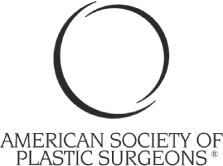Breast Augmentation
What Are The Steps Of The Breast Augmentation Procedure?

The Breast augmentation procedure is one that alters your breast’s size, and in-short transforms your life!
It involves methods such as the transfer of fat and implants to improve the breast’s natural form. Breast surgery is often used to alter your breast size after pregnancy or weight loss increase the natural breast volume or give the ideal shape to your breasts. If the surgeon extracts fat from another part of your body to enhance your breast’s appearance, it is referred to as breast fat transfer.
How does the breast augmentation procedure help you?
Here are a few aspects you can achieve by having breast surgery.
- Balance your breast and hip contours
- Increase the projection and volume of your breasts.
- Increase your confidence and self-esteem
- You can also consider this procedure for reconstruction of the breast after mastectomy or an injury.
What are the steps for breast augmentation Procedure?
Anaesthesia
Because the breast augmentation procedure is a cosmetic procedure, anesthesia is needed. It is given at the beginning of the process to ensure you feel at ease throughout the surgery. Your plastic surgeon can recommend the most suitable choice for you.
Making The Incision
In the case of breast augmentation, the incisions for surgery are placed in areas that are not noticeable to reduce the visibility of scars. You and your surgeon can discuss the different kinds of incisions during your appointment together. The type of incision you choose will be determined by the type of breast implant selected as well as the extent of enlargement desired, the structure of your body, and, finally, the patient-surgeon preference.
Inserting the Breast Implant
After your surgeon has made an incision, they’ll insert a breast implant into the pocket. The surgeon will have three choices to place the breast implant in the bag. They will talk to you in advance, depending on your preference.
Closing The Incision Site
After the breast implants have been appropriately placed, the incisions are sealed with layers of sutures within the breast tissue and surgical tape to protect the skin. The incisions will disappear over time and develop scars.
Recovery
After the procedure, your surgeon will dress the breasts with an elastic gauze dressing and bandage or request you to wear a bra that supports your breasts. This will aid in reducing the swelling and help keep your breast until it is completely healed. Before you leave, your healthcare professional will instruct you to follow specific steps to ensure a rapid recovery.
At Dr Faisal’s practise we remind you to attend the next appointment. Most patients will also receive prescriptions or medicines. During the recovery process, you must wear a supportive garment, such as an elastic bra or bandage, referred to as a bandeau. Your doctor advises this, and they might also request that you keep your bandage on for a specific time.
Important FAQ’s
Facelift surgery, also known as rhytidectomy, is a cosmetic procedure designed to tighten and lift sagging skin on the face and neck, resulting in a more youthful appearance.
Selecting the appropriate implant size involves considering factors like body shape, lifestyle, and personal goals. Consultation with the surgeon, who can provide sizing recommendations based on your anatomy and preferences, is crucial for achieving the desired results.
Breast augmentation methods vary, with options like subglandular and submuscular placement of implants. The augmentation method chosen depends on factors such as body type, existing breast tissue, and individual goals. Submuscular placement involves positioning the implants beneath the chest muscles, while subglandular placement positions them behind the breast tissue but in front of the muscles.
The inframammary incision runs horizontally along the natural crease line under the breast. Wit this technique the surgeon can access the implant placement area with precision. It is a popular choice as it typically results in well-concealed scars and offers versatile access for various implant types.
Yes, advancements like fat transfer procedures involve using the patient’s own fat cells to enhance breast volume. This method can be a natural alternative to traditional implants, offering subtle augmentation and the added benefit of liposuction in donor areas.
Rapid recovery breast augmentation focuses on minimizing downtime and discomfort. This technique involves specific surgical approaches, advanced anesthesia methods, and post-operative care strategies to speed up the recovery process, allowing patients to resume thier routine activities more quickly.
Following post-operative care instructions, including proper rest, hydration, and medication adherence, is crucial. Wearing compression garments as recommended, avoiding strenuous activities, and attending follow-up appointments are essential steps in ensuring a smooth recovery.
Yes, breast augmentation can definitely be combined with a breast lift or liposuction for a comprehensive enhancement. The combination depends on individual goals and consultation with the surgeon to determine the most effective approach.
Breast implants are not for lifetime and their longevity varies. Factors such as implant type, lifestyle, and age can influence their durability. You will need to schedule regular follow-up appointments with the surgeon are essential for monitoring implant health and detecting any issues early on.
Depending on the surgeon’s recommendations, gentle breast massages and specific exercises may be advised during the recovery period to promote natural movement and reduce the risk of complications. It’s important to follow these guidelines diligently for optimal results.








